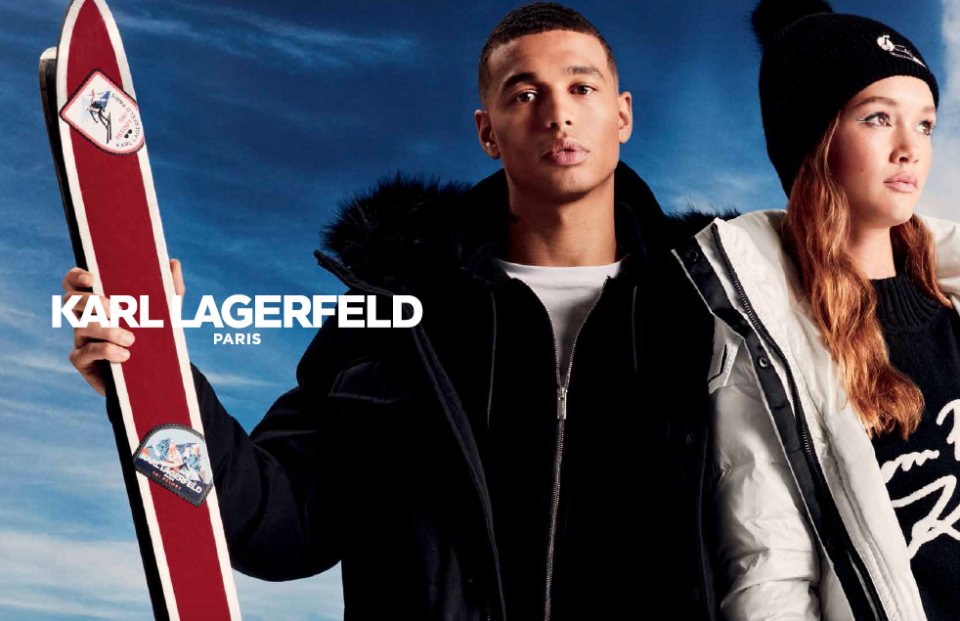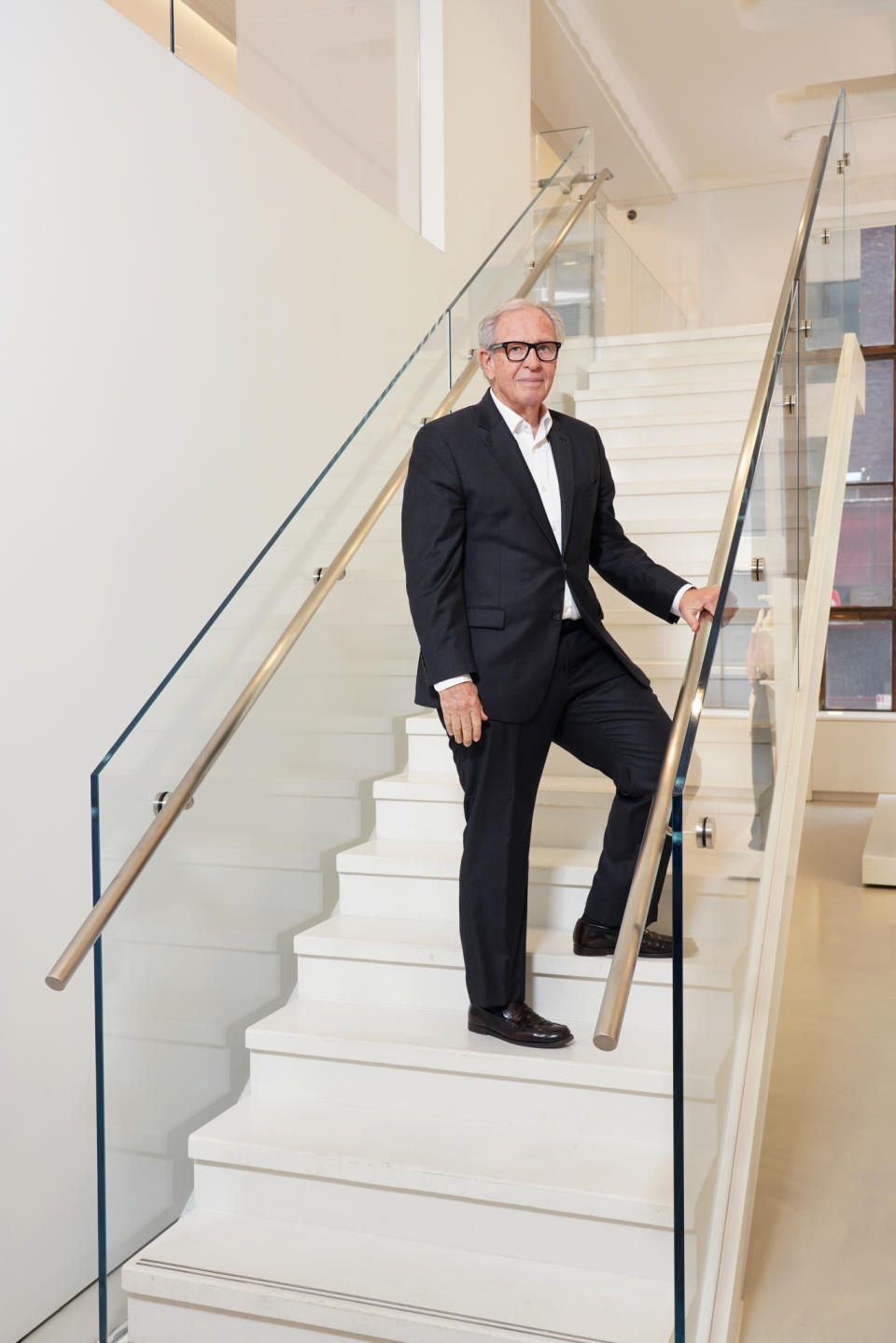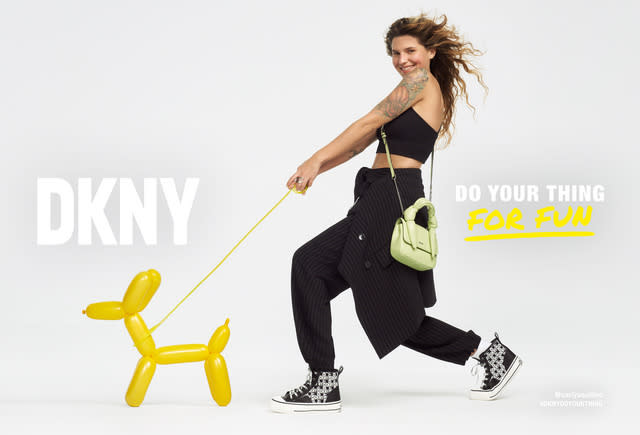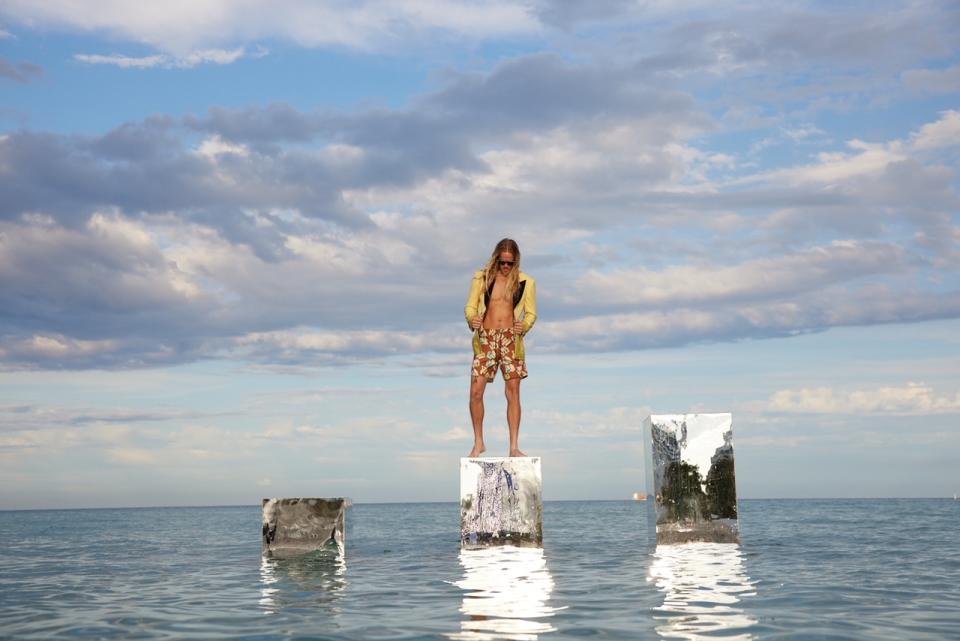How Morris Goldfarb Became a Fashion Constant

At a time when changes are coming faster than ever — from wild economic swings to the digital land grab in the metaverse — Morris Goldfarb remains a constant in fashion, the steady hand in the storm at G-III Apparel Group for 50 years.
While other fashion empires have risen and fallen, Goldfarb, 71, has navigated the company through seven recessions, a variety of business models, a million-and-one style changes, the rise of the internet and more.
More from WWD
And he just now seems to be hitting his stride with a business that is more diversified than ever as both licensee and licensor, an acquirer of brands and, potentially, the source of a luxury spin-off.
Not bad for a guy who recently celebrated his golden anniversary at the company founded by his father, Holocaust survivor Aron Goldfarb, in 1956.
Although his father founded the company that would become G-III, it is Goldfarb who has crafted it into the business it is today, taking the reins just two years after joining the business and living most of his adult life in the G-III corner office.
Luckily Goldfarb is a quick study — he has had to be — as G-III evolved to keep up with the times. The firm morphed from a maker of leather jackets into a powerhouse licensor of a women’s apparel into now, a builder of brands.
Today G-III logs annual revenues of $2.8 billion with brands such as DKNY, Donna Karan and Karl Lagerfeld and big licensed businesses with PVH Corp.’s Tommy Hilfiger and Calvin Klein. The 35 percent bounce-back in sales for 2021 drove profits of more than $200 million.
Last year was a banner year for both the company and Goldfarb, who logged total compensation of $24.9 million, including $7.5 million in incentive pay, a $1 million salary and stock awards that were valued at $16.2 million, although their realized value will depend on how the shares perform, linking the chief executive officer’s fortunes to those of shareholders.

Courtesy Photo
Goldfarb is going to have to stay on his toes to keep G-III moving forward in an increasingly tough landscape.
“Year 50 is the toughest,” he admitted of his tenure in an interview with WWD.
“It could be the war in Ukraine. It could be inflation. It could be supply chain issues. It could be I’m getting older. It could be staff working from home. It could be [the industry has] over-inventoried…stores without sufficient markdowns to move the product out. There’s a lot of ‘could bes’ and that clearly is the problem. Navigating through these times, my view is it takes 50 years of experience to do it.”
It also takes some perspective.
Goldfarb’s view of life and work is clearly informed by his father’s experience in the Holocaust.
The last words his father told him before he was sent off to the death camp were, “‘Maybe you will survive,’” Goldfarb said. “Those words always stick with me, and his story is always part of my life. There could be no worse crisis than what he endured and, fortunately for me, he came through it. He was an aggressive young man. He had years of pain and he had years of prosperity. In spite of all he went through, he was a happy guy. Happy every morning. He smiled. He was grateful for a day of sunshine.”
Goldfarb grew up in what he described as a “commune of Holocaust survivors,” and said, “I guess I have within me a survivor’s instinct.”
His father, who passed away in 2012, also gave his son something else important — responsibility.
“He stepped aside at a very young age and let me run the front end of the business,” Goldfarb said.
At the time it was a small leather business that counted Petrie Stores as its biggest account. Goldfarb expanded with similar chains, like Merry Go Round, building the company up only for that whole ilk of specialty chains to go away in 1995.
“Talk about pressure, talk about how to survive, that was probably the most catastrophic event that occurred,” said Goldfarb, recalling that the business shrunk by 60 percent.
He pivoted to licensing and became a key outerwear resource for retailers and brands, selling Kenneth Cole-branded goods at Macy’s, Nine West at May Co., and Cole Haan at stores such as Saks Fifth Avenue and Nordstrom.
“That was the beginning of what still exists today, a platform that has multiple brand classifications,” he said. “We took that model that we had in coats and we applied it to the dress business” as well as to suits, athleisure, footwear and beyond.
“What was great in the maturation of the business was that we were licensees and we were privy to the back of house of some wonderful companies,” Goldfarb said.
He also had some good backup at his company.
“As we grew the first phase of our business, I had eight amazing women that were successful, driven. We were all of similar age, we all had a passion for what we were doing,” Goldfarb remembered. “There was no testosterone in the room. It was pure passion and drive.”
That crew was led by Jeanette Nostra-Katz, who held a number of leadership positions over the years and is still a strategic adviser at the company.
What Goldfarb described as “phase two” of G-III’s growth started with acquisitions. In 2005, the company struck two deals to buy the privately held coat manufacturers Marvin Richards and Winlit. The Marvin Richards transaction brought Sammy Aaron on board, who became Goldfarb’s right hand and, ultimately, vice chairman and president of the company.
“He had no fear of straying from the coat business and saying, ‘We can do women’s suits and we can do dresses,’” said Goldfarb, adding that many other people also made significant contributions to the company’s success during this time.

George Chinsee/WWD
While that expansion seems logical, maybe inevitable, now, at the time, it meant going up against two entrenched powers in women’s fashion.
“Twenty years ago, Liz Claiborne and Jones New York were going to own the industry, they were the two big players,” recalled Manny Chirico, the former CEO of PVH who worked with Goldfarb over that time building big women’s apparel businesses for Calvin Klein and Tommy Hilfiger.
But while G-III has endured, grown and added new lines of business, Liz Claiborne Inc. and Jones Apparel Group flared up only to burn out.
“Both companies just didn’t evolve and I think G-III was there to pick up the pieces,” Chirico said. “Between Morris and Sammy…they just built a great machine that [PVH] clearly benefited from.”
Chirico described Goldfarb as “the best strategic partner that I had during that period.”
Goldfarb owes at least some of his success and longevity to his approach to his job.
“I’m not a hired CEO,” he said. “I’m a founder and there’s a different headset when you’re a founder versus a hired CEO that has eyes set on personal growth and career growth and possibly the next, bigger job.
“There is no bigger job,” Goldfarb said. “I make my side investments in areas of business that don’t relate to apparel, but my day job is G-III. My name is on the door.”
That has helped Goldfarb run the company his way.
“We’re not necessarily stock-driven,” he said.
G-III’s stock is down about 28 percent over the past year, losing ground in the market rout, but not as much as many fashion companies. Shares rose 0.5 percent to close at $20.15 on Monday, leaving the firm with market capitalization of $972 million.
The CEO owns more than 4 million shares of the company stock, or 7.8 percent of the company, valued at $82 million given current market valuations.
“We’re safe in our investments,” Goldfarb said. “We have a strong balance sheet and we’re not straddled with debt, so a lot of that makes difficult times easier to deal with and it’s kind of where we were at the beginning of the pandemic.”
And that helped the company to continue to expand.
In May, G-III bought full control of the Karl Lagerfeld brand, giving the company a firmer footing in Europe where it also has Vilebrequin, acquired in 2012, and Sonia Rykiel, acquired in 2021.
Goldfarb, who also snatched up Donna Karan International in 2016, said he’s willing to be patient when he buys a company.

Courtesy
“We are not looking for the most accretive acquisitions simply to show cosmetic improvement in our business,” he said. “We might buy an asset that is not immediately accretive. We look in the mirror and say, ‘How can we make this an amazing accretive acquisition?’ We sacrifice a little bit of the short term for the long term.”
While it’s relatively common for CEOs who have had success in building big businesses to eagerly jump in to build up a new brand, Goldfarb restrains himself and mostly keeps his hands off his new acquisitions.
“It’s not easy to keep your hands off of it and influence immediate growth,” he said, speaking of the Vilebrequin deal. “But there are people with great experience building a brand and those brands — Vilebrequin — is very special. The last thing I wanted to do is Americanize it. It has a French image, it has a beach image and it has a pure luxury-brand apparel [image] to the population that it serves.”
This is a lesson Goldfarb learned as he engaged in various businesses around the world.
“You realize that you’re only a guest in the company that you work in,” Goldfab said. “There’s no way you’re going to impose your culture, so the best attitude is to accept theirs and learn how to live with theirs.”
That kind of patience could pay off more in the future: The luxury, European-based wing of G-III could stand on its own some day.
“Brands like Vilebrequin don’t trade on a multiple of earnings, they trade on a multiple of sales,” Goldfarb said. “G-III trades on a very low multiple of earnings.

Courtesy Photo
“The future might lie in spinning off Vilebrequin, Lagerfeld and Sonia Rykiel,” he said, noting that business would “garner a much higher multiple” on its own.
But that might be a project for the next generation. Goldfarb’s son, Jeffrey, works in the company as executive vice president.
“We’re realists, we know we have to prepare the next generation,” Goldfarb said. “This generation coming through is stronger than the generation that leads today.
“The future in fashion is a good one,” he said.
And G-III is moving into that future using the approach Goldfarb has developed.
That’s clear in G-III’s dabbling in the latest, buzziest thing — the metaverse.
“Clearly the metaverse is a little bit greek to me,” Goldfarb said. “It’s much more familiar to Jeff and the team of people that work under Jeff. I wouldn’t deny them the ability of testing the concept and how it might work for G-III.”
The company has made an investment in a metaverse site and is seeing where it all goes.
“We’re prepared to lose money for the sake of an education or an upside,” he said. “There’s no denial of the future.”
Sign up for WWD's Newsletter. For the latest news, follow us on Twitter, Facebook, and Instagram.

